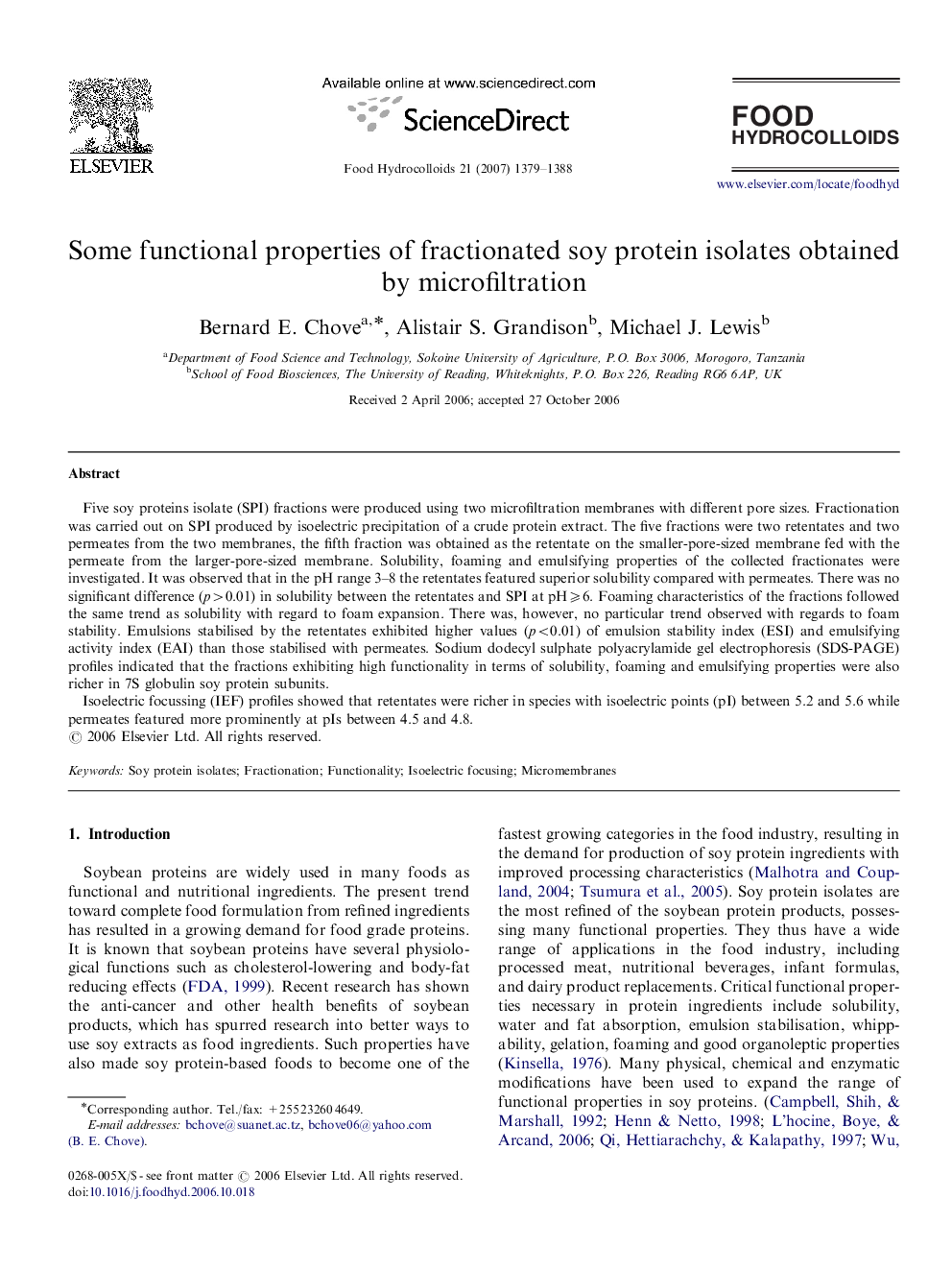| Article ID | Journal | Published Year | Pages | File Type |
|---|---|---|---|---|
| 605742 | Food Hydrocolloids | 2007 | 10 Pages |
Five soy proteins isolate (SPI) fractions were produced using two microfiltration membranes with different pore sizes. Fractionation was carried out on SPI produced by isoelectric precipitation of a crude protein extract. The five fractions were two retentates and two permeates from the two membranes, the fifth fraction was obtained as the retentate on the smaller-pore-sized membrane fed with the permeate from the larger-pore-sized membrane. Solubility, foaming and emulsifying properties of the collected fractionates were investigated. It was observed that in the pH range 3–8 the retentates featured superior solubility compared with permeates. There was no significant difference (p>0.01) in solubility between the retentates and SPI at pH⩾6. Foaming characteristics of the fractions followed the same trend as solubility with regard to foam expansion. There was, however, no particular trend observed with regards to foam stability. Emulsions stabilised by the retentates exhibited higher values (p<0.01) of emulsion stability index (ESI) and emulsifying activity index (EAI) than those stabilised with permeates. Sodium dodecyl sulphate polyacrylamide gel electrophoresis (SDS-PAGE) profiles indicated that the fractions exhibiting high functionality in terms of solubility, foaming and emulsifying properties were also richer in 7S globulin soy protein subunits.Isoelectric focussing (IEF) profiles showed that retentates were richer in species with isoelectric points (pI) between 5.2 and 5.6 while permeates featured more prominently at pIs between 4.5 and 4.8.
